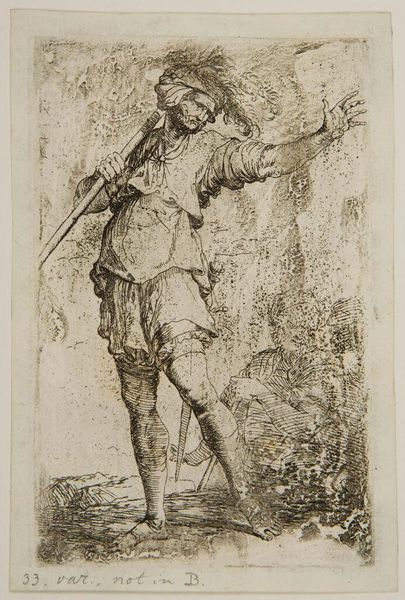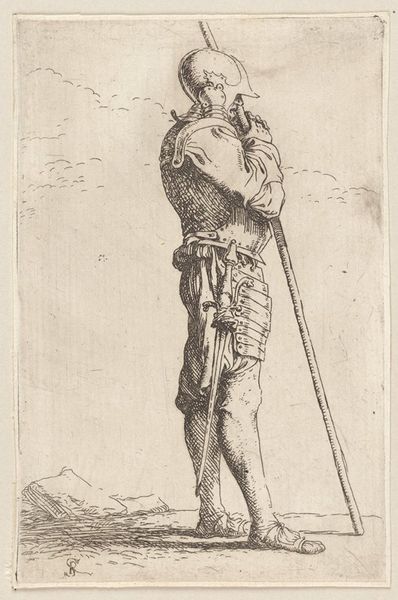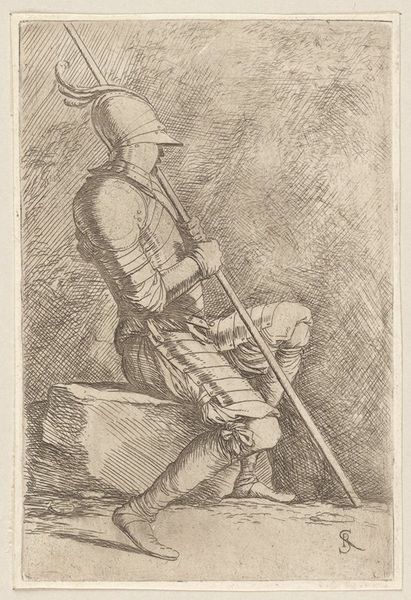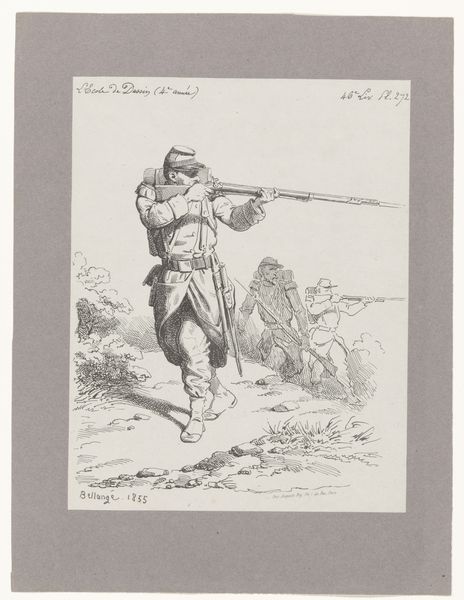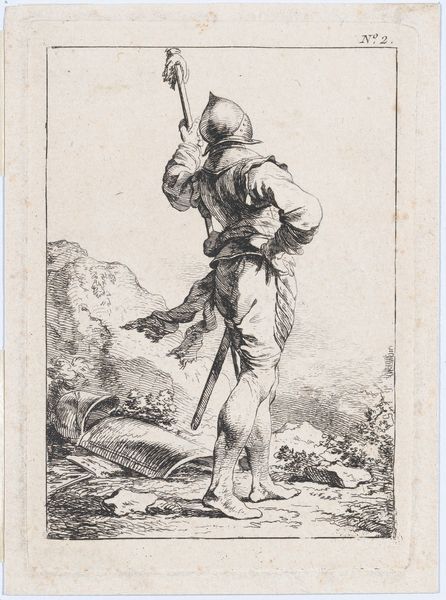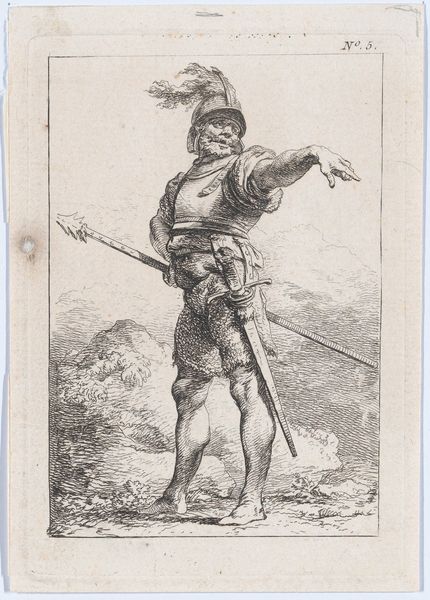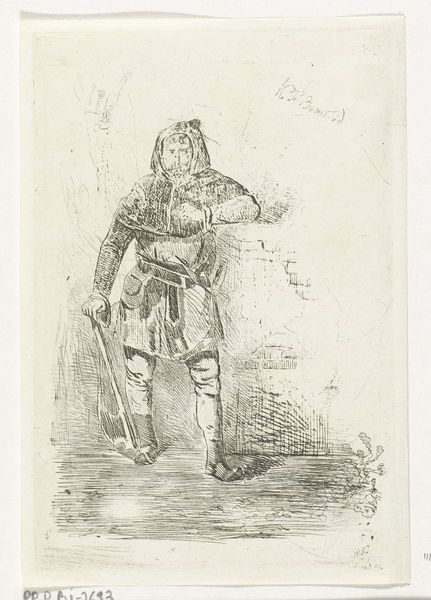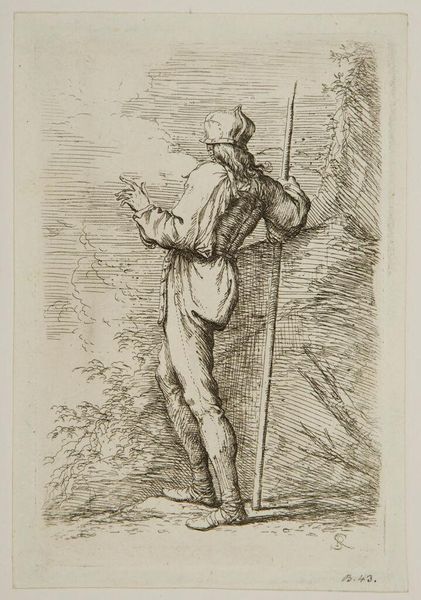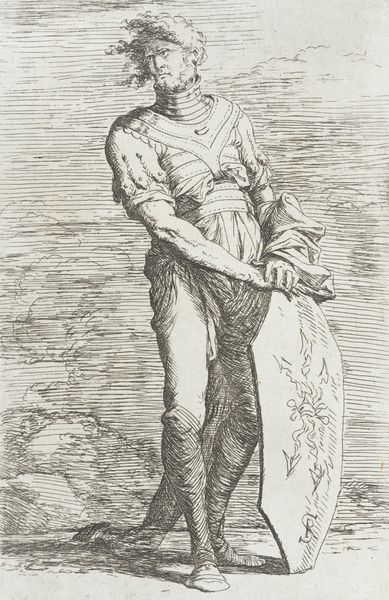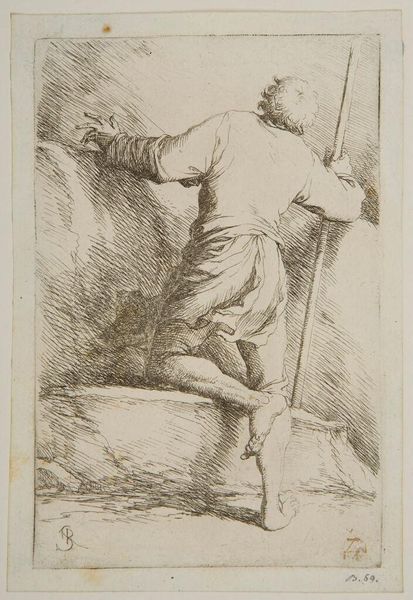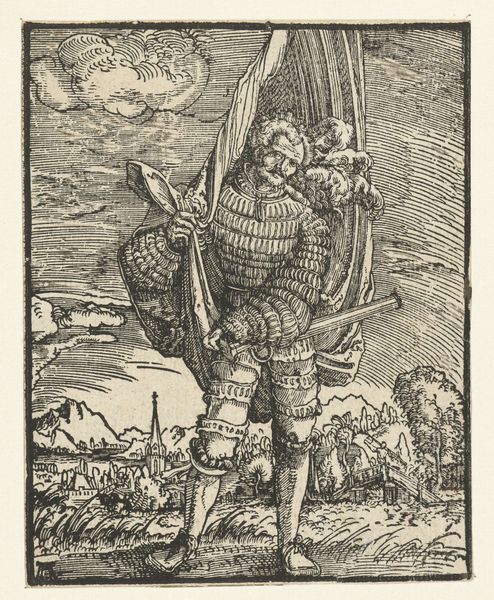
drawing, print, etching
#
drawing
#
baroque
# print
#
etching
#
landscape
#
figuration
#
history-painting
Copyright: Public Domain: Artvee
Curator: This etching by Salvator Rosa, created between 1656 and 1657, is titled "Soldier in Helmet and Armor Regarding a Stream." Editor: My initial sense is one of quiet weariness. The cross-hatching technique, the soldier's slumped posture. He appears burdened, despite the formidable armor. Curator: The image's power lies in its orchestration of tonal values. Note how Rosa employs the etching needle to render both the metallic gleam of the armor and the textural density of the surrounding foliage, establishing an elegant visual tension between the artificial and the natural. Semiotically, the armor signifies not just protection but also the weight of obligation. Editor: I'm drawn to consider what exactly constitutes that armor. It appears finely wrought but impractical, the scales meticulously crafted. Was Rosa commenting on the social cost and expenditure embedded within such a status symbol? The stream becomes then a mirror, not only reflecting but posing implicit questions. What value is this martial finery in the quiet observation of nature? What resources were consumed in its creation? Curator: An insightful reading. The reflective surface is indeed visually arresting, drawing our eyes back to the soldier himself. Compositionally, the stream also performs a vital function in dividing the image into two planes—the chaotic world of the soldier and the serene reflection of nature, producing a dynamic interplay between movement and stasis. Editor: I agree, though I would rephrase that division slightly to include the viewer’s perspective. After all, each print represents hours of meticulous work involving inks, metal plates, the press, the edition—processes demanding skill and labor that are crucial to any real reading of this work. It's fascinating to think of these many iterations made possible via reproductive media for a larger audience. Curator: Well, looking at it as a product also feels deeply unsatisfying. Considering the piece from this more narrow reading limits how we could see formal arrangements creating something aesthetically affecting. Editor: I appreciate your counterpoint. And perhaps a more socially focused approach illuminates how its impact as material resonates and creates broader conversation that could then loop back to form. Curator: Yes, seeing them in connection with one another helps create new dimensions of inquiry for the viewer.
Comments
No comments
Be the first to comment and join the conversation on the ultimate creative platform.

